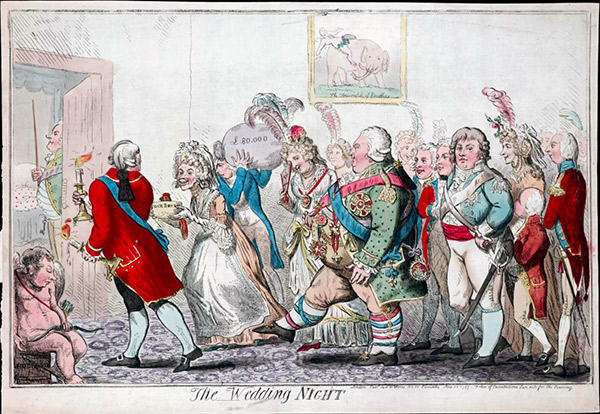Bedding ceremonies
Published in Features, Issue 1 (January/February 2019), Volume 27By Fiona Fitzsimons
In the eighteenth and nineteenth centuries Irish marriage law deviated from the laws that pertained in England, Wales and Scotland. In Ireland, marriages between co-religionists, celebrated by their own clergymen, were lawful, while inter-faith marriages were open to legal challenge under the Penal Laws. Marriage customs, however, were remarkably similar. Before the bride and groom could marry, they had to meet certain preconditions. The couple should not be too closely related by blood or affinity(in-laws and step-siblings); they shouldn’t have a prior attachment (an earlier marriage or promise to marry); and they had to give their free consent.
Even after these conditions were met, the bride and groom had to do more than take part in a wedding ceremony to contract a binding marriage: they had to declare in advance to their families and community their intention to marry; a marriage settlement or dowry was required to protect the property rights of the bride and groom’s families; the wedding had to be performed by an ordained clergyman, preferably before witnesses (except in Scotland, where consent was the only requirement); and the marriage had to be consummated. If any one of these stages was omitted and the relationship subsequently failed, either party might seek a court annulment. An annulment was a cheaper, less intrusive option than divorce, which was only available in Ireland by a private act in parliament.
The family historian is likely familiar with most of the records that survive to document each of these processes: the declaration of intent to marry was documented in banns and licences issued by the diocesan courts; marriage settlements were memorialised in the Registry of Deeds or in the personal papers among estate records (with an inevitable bias towards the wealthy in what survives); and evidence of marriage survives in church records. What of the last step required? Obviously,the clearest evidence that a marriage had been consummated was children, but what other evidence was ever required or used?
In cases of elopement the couple might engineer a witness, often a servant, to see them in bed in a state of undress. More commonly, the couple remained absent for a sufficient time so as to leave no doubt that they had consummated the marriage. This gives a new meaning to the aphorism about ‘evidence of absence’. Where marriages failed because they were not consummated, we have the fragmentary records that survive for some Consistorial Courts of the Established Church. We can supplement these with discrete newspaper accounts of cases before the ecclesiastical courts.

We also have limited evidence that a ‘bedding ceremony’ was practised in Ireland. This custom was popular in Europe among all social groups, although inevitably the most complete evidence we have is for the marriages of royalty and aristocracy. By the nineteenth century in Ireland the ceremony began with the priest or minister blessing the marital bed,to ‘sanctify the connubial state’. At some time in the night the assembled guests put the newly-weds to bed, with a show of bawdy jokes and music. In Monaghan the couple were said to be put to bed for two hours during the wedding feast, ‘when they would get up, the neighbours would be invited and they would dance the whole night till morning’. Other accounts indicate that the bedding ceremony was at the end of the night’s festivities. The admittedly sparse evidence shows that the Irish iteration included musicians(pipers) and, on occasion, vegetable material. By one account, the groom was accompanied by a ‘volley of cabbage stalks’.
Fiona Fitzsimons is a director of Eneclann, a Trinity campus company, and of findmypast Ireland.
















